Styles/Genres Teaching Resources for Key Stage 2 - Lower
- Plus Plan
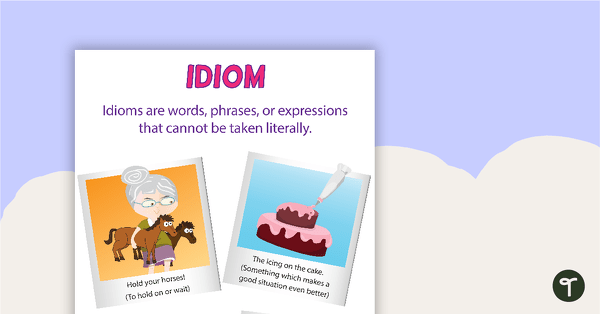
Idiom Poster (Version 2)
A poster providing a definition and examples of idioms.
- Plus Plan
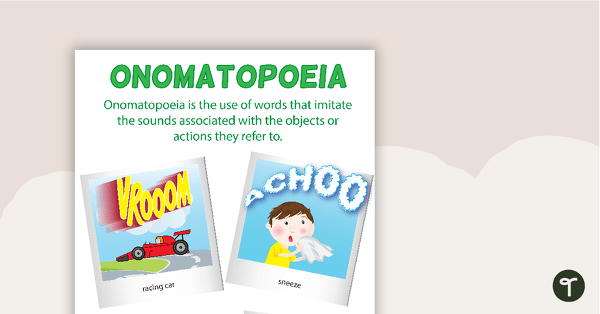
Onomatopoeia Poster
A poster providing a definition and examples of onomatopoeia.
- Plus Plan
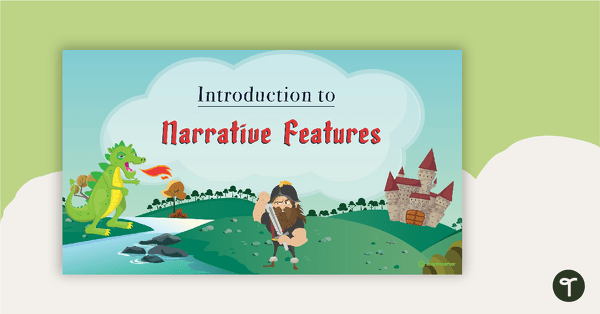
Introduction to Narrative Features PowerPoint - Year 3 and Year 4
A 23 slide editable PowerPoint template to use when teaching your students about the features of narrative texts.
- Plus Plan
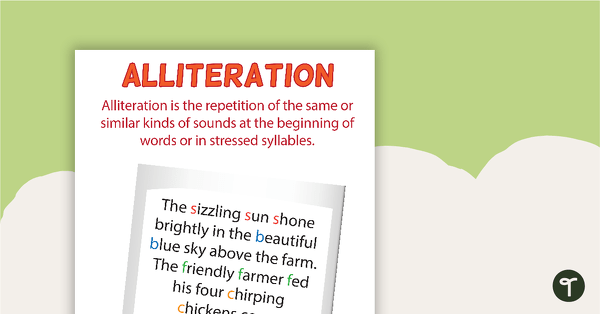
Alliteration Poster (Version 2)
A poster providing a definition and examples of alliteration.
- Plus Plan
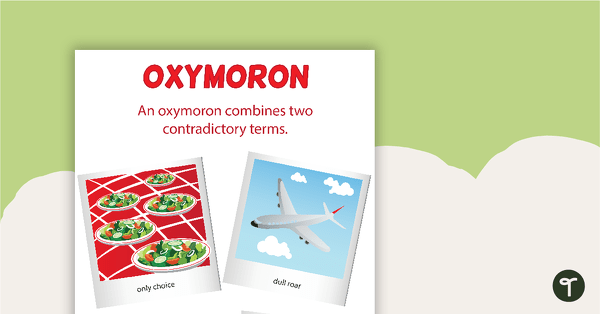
Oxymoron Poster
A poster providing a definition and examples of oxymorons.
- Plus Plan
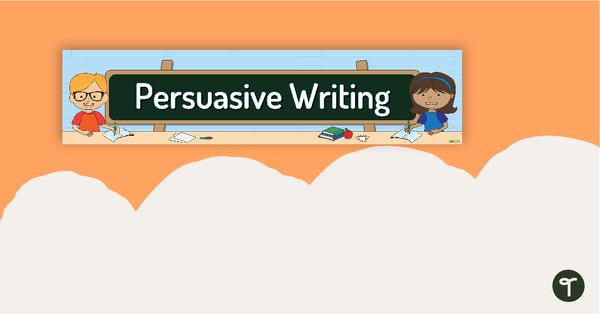
Persuasive Writing Display Banner
A classroom display banner to use on your 'Persuasive Writing' display board.
- Plus Plan
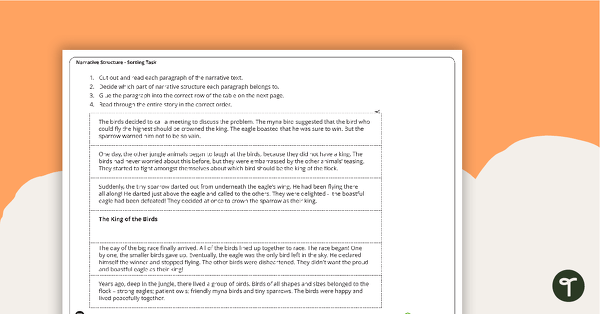
Narrative Structure Sorting Task
A sorting task to help students learn about narrative structure.
- Plus Plan
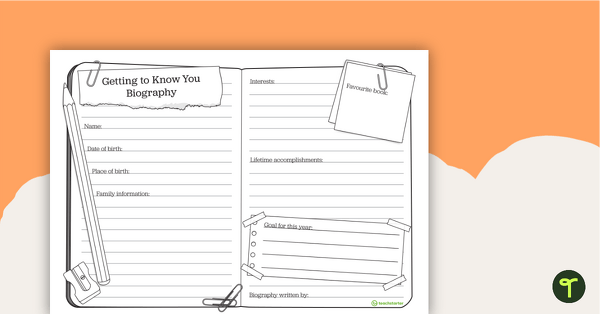
Getting to Know You Biography Template
Help your students get to know each other with a Back to School Biography writing activity.
- Plus Plan
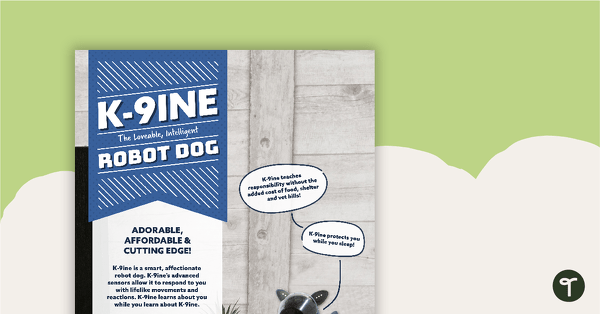
Advertisement Worksheet – K-9ine the Robot Dog
A comprehension worksheet for a persuasive magazine advertisement about a robotic dog.
- Plus Plan

What's At Stake Poster
A poster to display in your classroom when teaching students how to build characters for a story.
- Plus Plan

Setting Profile Worksheet
A worksheet for students to use when creating a setting for a story.
- Plus Plan
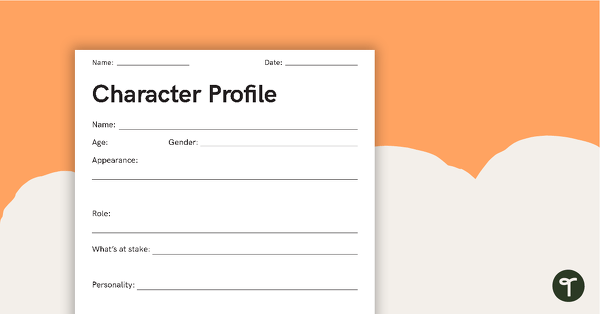
Detailed Character Profile Worksheet
A worksheet for students to use when building a character for a story.
- Plus Plan
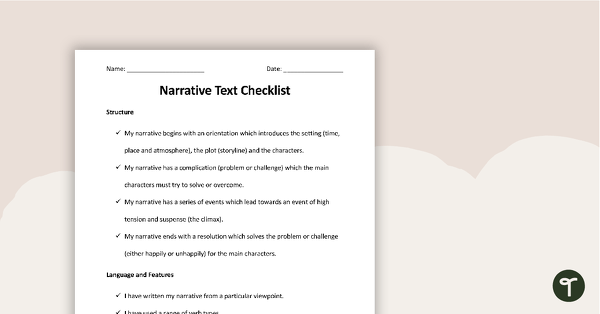
Narrative Writing Checklist - Structure, Language and Features
A checklist for students to use when proofreading and editing their narrative writing.
- Plus Plan
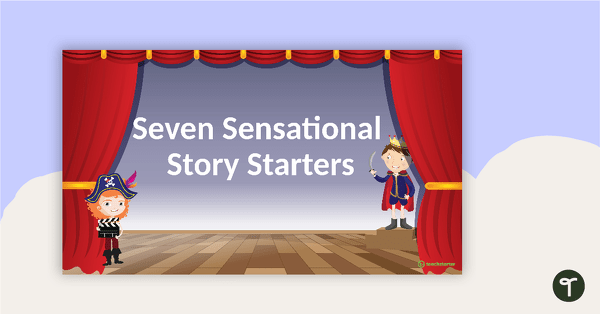
Seven Sensational Story Starters PowerPoint
A 10 slide editable PowerPoint template of story starters to use in narrative writing.
- Plus Plan
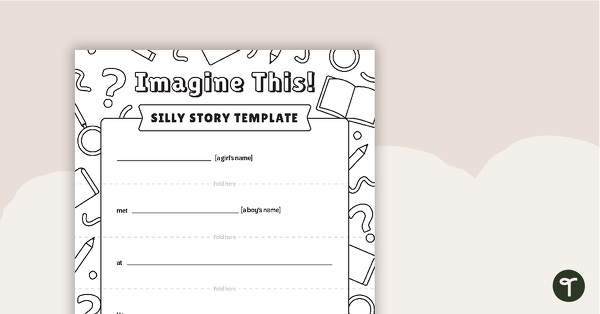
Imagine This! Silly Story Template
A template to use as a fun writing activity.
- Plus Plan
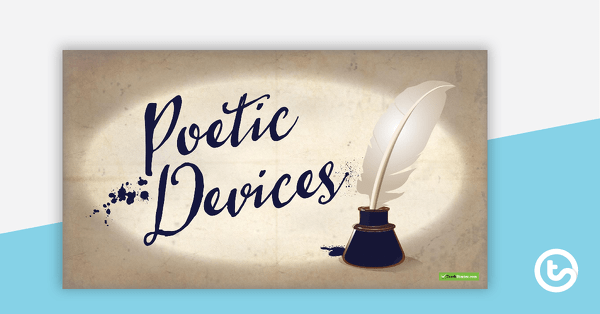
Poetic Devices PowerPoint
A 23 slide editable PowerPoint template to use when introducing students to poetic devices.
- Plus Plan
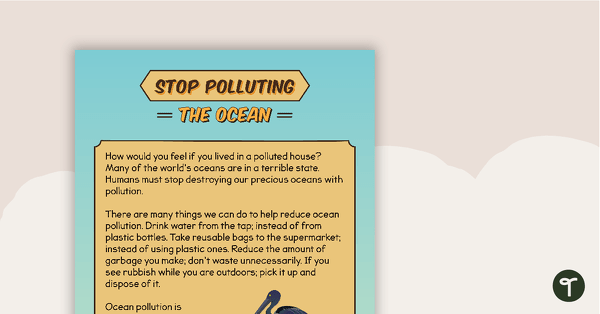
Sequencing Activity - Stop Polluting The Ocean (Persuasive Text) - Simplified Version
A sequencing task using a simple persuasive text.
- Plus Plan
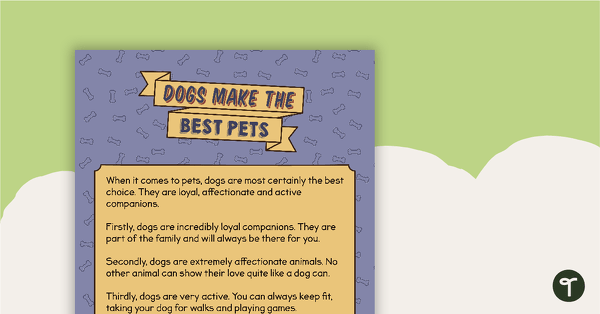
Sequencing Activity - Dogs Make the Best Pets (Persuasive Text) - Simplified Version
A sequencing task using a simple persuasive text.
- Plus Plan
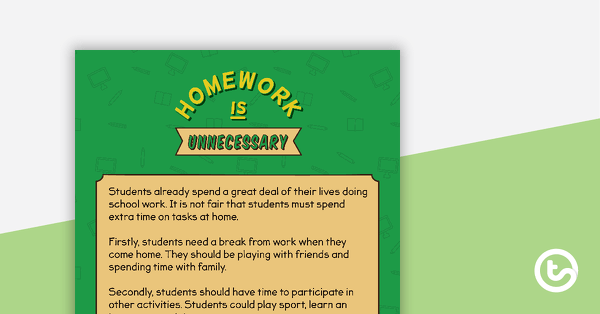
Sequencing Activity - Homework is Unnecessary (Persuasive Text) - Simplified Version
A sequencing task using a simple persuasive text.
- Plus Plan
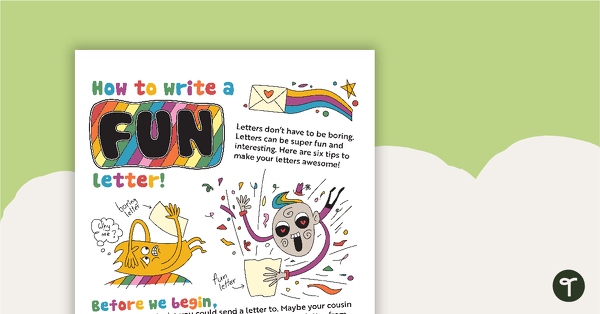
How To Write A Fun Letter
Six simple and creative ideas for writing a fun letter.
- Plus Plan
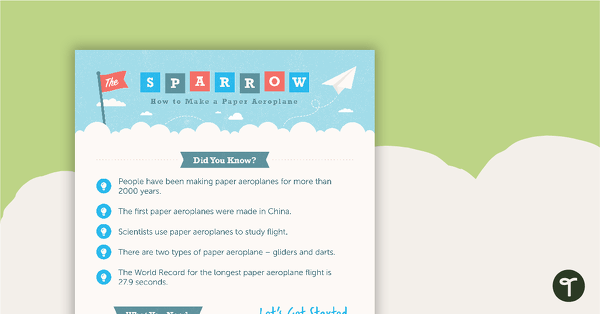
Procedure Worksheet – How to Make a Paper Aeroplane
A comprehension worksheet for a magazine procedure article about making a paper aeroplane.
- Plus Plan
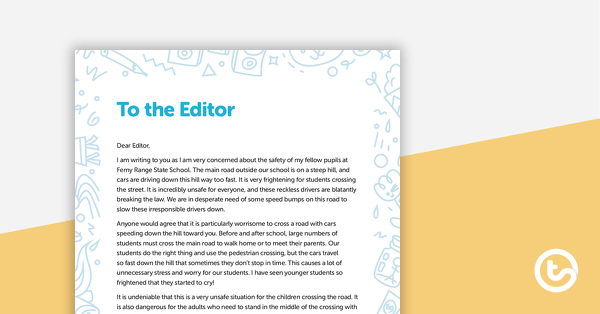
Letter to the Editor (School Crossing Concerns) – Worksheet
A comprehension worksheet for a letter to the editor from the Year 5 magazine (Issue 2).
- Plus Plan

Low and High Modality Words – Worksheet
A sorting activity for low and high modality words.
- Plus Plan
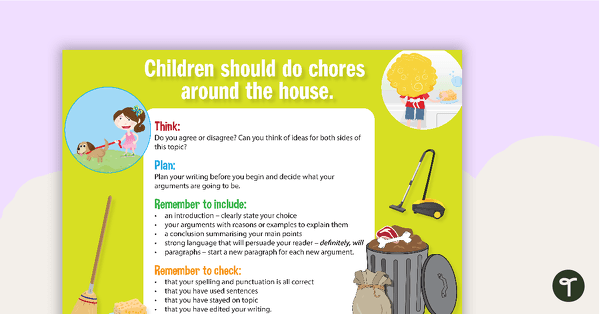
5 Persuasive Writing Stimulus Sheets
Writing stimulus sheets for persuasive writing.
- Plus Plan
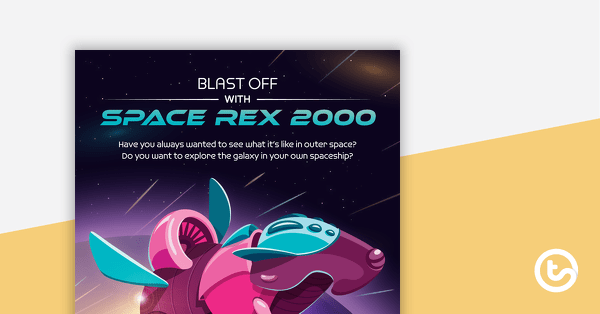
Blast Off with Space Rex 2000 – Worksheet
A comprehension worksheet for a fake advertisement from the Year 5 magazine (Issue 2).
- Plus Plan
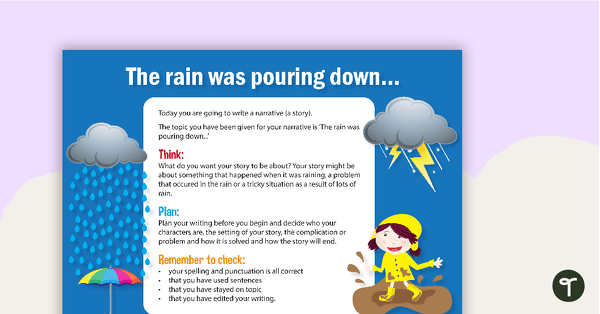
5 Narrative Writing Stimulus Sheets
Writing stimulus sheets with a narrative focus.
- Plus Plan
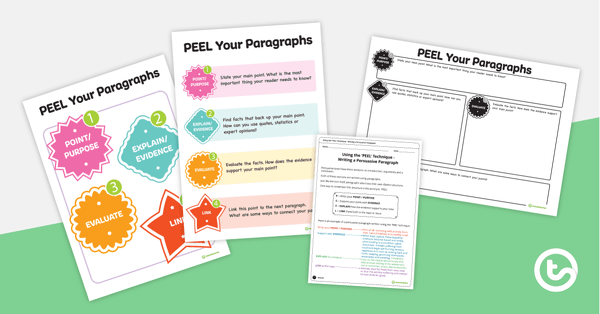
PEEL Paragraph Structure - Poster and Worksheets
A PEEL paragraph technique poster, explanatory worksheet and graphic organiser.
- Plus Plan
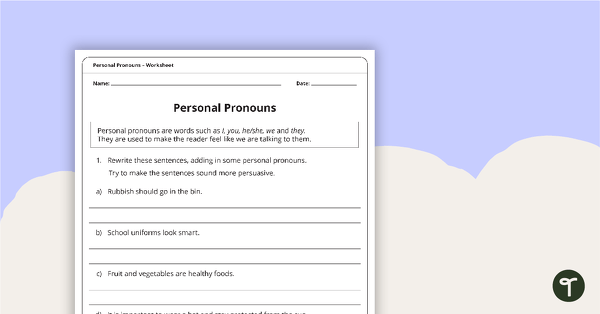
Personal Pronouns Worksheet
A worksheet to consolidate students' understanding of using personal pronouns in their persuasive writing.
- Plus Plan
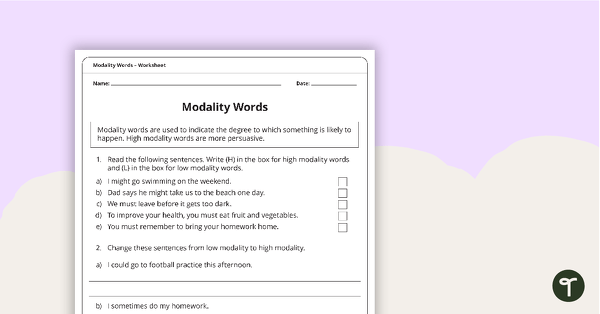
Modality Words Worksheet
A worksheet to consolidate students’ understanding of high modality and low modality words.
- Plus Plan
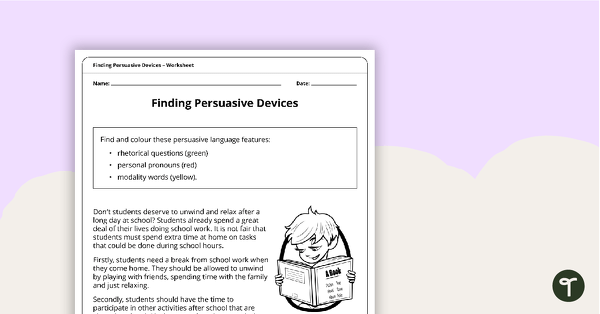
Finding Persuasive Devices Worksheet
A worksheet to consolidate students' understanding of persuasive devices.
- Plus Plan
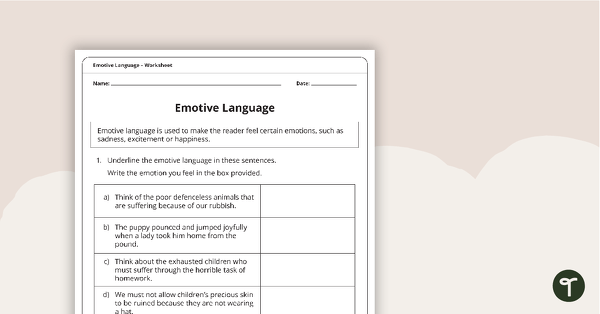
Emotive Language Worksheet
A worksheet to consolidate students' understanding of emotive language.
- Plus Plan
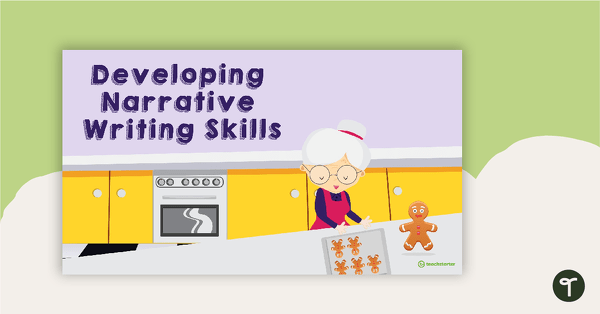
Developing Narrative Writing Skills PowerPoint - Year 3 and Year 4
A 18 slide editable PowerPoint template to use when teaching your students about the structure and language features of narrative texts.